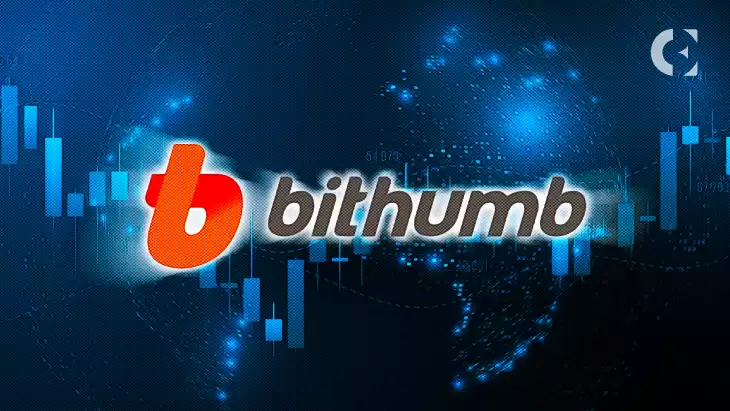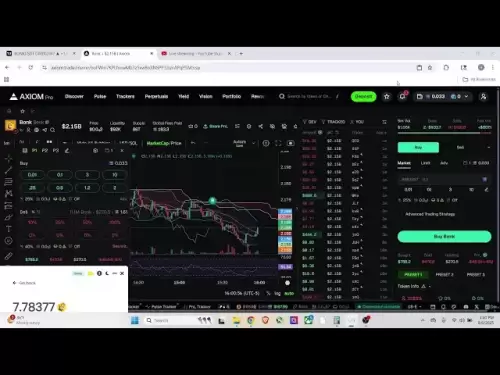-
 Bitcoin
Bitcoin $115100
1.27% -
 Ethereum
Ethereum $3675
2.71% -
 XRP
XRP $2.995
1.45% -
 Tether USDt
Tether USDt $1.000
0.02% -
 BNB
BNB $769.8
2.64% -
 Solana
Solana $168.0
3.25% -
 USDC
USDC $0.9999
-0.01% -
 TRON
TRON $0.3371
1.48% -
 Dogecoin
Dogecoin $0.2051
3.36% -
 Cardano
Cardano $0.7394
2.30% -
 Hyperliquid
Hyperliquid $38.15
0.42% -
 Stellar
Stellar $0.3966
-0.36% -
 Sui
Sui $3.486
2.93% -
 Chainlink
Chainlink $16.72
2.52% -
 Bitcoin Cash
Bitcoin Cash $568.0
4.36% -
 Hedera
Hedera $0.2440
2.59% -
 Ethena USDe
Ethena USDe $1.001
0.04% -
 Avalanche
Avalanche $22.16
2.06% -
 Litecoin
Litecoin $119.1
-0.73% -
 UNUS SED LEO
UNUS SED LEO $8.991
0.04% -
 Toncoin
Toncoin $3.232
-0.39% -
 Shiba Inu
Shiba Inu $0.00001233
2.82% -
 Uniswap
Uniswap $9.717
2.53% -
 Polkadot
Polkadot $3.664
1.85% -
 Dai
Dai $1.000
0.01% -
 Monero
Monero $281.2
-3.89% -
 Bitget Token
Bitget Token $4.350
1.55% -
 Cronos
Cronos $0.1428
5.07% -
 Pepe
Pepe $0.00001050
3.68% -
 Aave
Aave $262.3
3.54%
Bithumb contract trading steps
For seamless contract trading on Bithumb, ensure proper understanding of risks, selection of appropriate contract types, implementation of risk management strategies, diligent market monitoring, and continuous education to maximize opportunities.
Nov 11, 2024 at 08:45 am

Bithumb Contract Trading: A Step-by-Step Guide
Understanding Contract Trading on Bithumb
Contract trading on Bithumb enables traders to speculate on the future price movements of various assets, such as cryptocurrencies, commodities, and indices, using leveraged positions. Here's a comprehensive guide to help you get started:
Step 1: Create a Bithumb Account
- Visit the official Bithumb website and click on "Sign Up."
- Provide your email address, create a password, and enter a referral code if available.
- Complete the KYC (Know Your Customer) verification process to activate your account.
Step 2: Fund Your Account
- Once your account is activated, you can deposit funds into your Bithumb wallet to facilitate contract trading.
- Select "Deposit" from the top menu, choose the preferred cryptocurrency or fiat currency, and follow the instructions.
- Note that deposits may take some time to process based on the payment method used.
Step 3: Access the Contract Trading Platform
- After funding your account, return to the Bithumb website and click on "Contracts" in the top menu.
- Select the desired contract type (e.g., Standard Perpetual Contracts, Inverse Perpetual Contracts).
- Choose the asset (e.g., BTC/USDT, ETH/USDT) that you wish to trade.
Step 4: Place a Trade
- The contract trading interface displays the market depth, price chart, and order placement options.
- Select whether you want to place a buy (Long) or sell (Short) order.
- Specify the contract size (amount of the underlying asset) and the leverage you wish to apply.
- Input the desired price and order type (e.g., Market, Limit, Stop-Limit).
- Click "Buy/Long" or "Sell/Short" to execute the trade.
Step 5: Manage Your Position
- After placing a trade, you can monitor and manage your position in the "Positions" tab.
- Adjust your leverage or close your position at any time to realize profit or cut losses.
- Use the "Historical Orders" tab to review your closed trades and analyze market performance.
Step 6: Withdraw Funds
- When you have finished trading, you can withdraw your profits or funds back to your external wallet.
- Select "Withdraw" from the top menu and follow the instructions for the chosen currency.
- Provide the withdrawal address and the amount you wish to transfer.
- Confirm the withdrawal request and follow the further verification steps as required.
Tips for Successful Contract Trading on Bithumb
- Understand Contract Trading Risks: Leverage trading magnifies potential profits but also amplifies losses.
- Choose the Right Contract Type: Explore the available options and select the contract that suits your trading style.
- Practice Risk Management: Implement stop-loss orders and avoid over-leveraging your positions.
- Pay Attention to Market Conditions: Monitor the underlying asset's price movements and news events that may impact its value.
- Educate Yourself: Read tutorials, articles, and seek knowledge to enhance your understanding of contract trading.
Disclaimer:info@kdj.com
The information provided is not trading advice. kdj.com does not assume any responsibility for any investments made based on the information provided in this article. Cryptocurrencies are highly volatile and it is highly recommended that you invest with caution after thorough research!
If you believe that the content used on this website infringes your copyright, please contact us immediately (info@kdj.com) and we will delete it promptly.
- BlockDAG, Litecoin, and Cardano: Charting the Course in Crypto's Dynamic Waters
- 2025-08-07 09:09:06
- Fireverse Token: Igniting a Musical Revolution in Web3
- 2025-08-07 08:27:45
- Ethereum, L2 Withdrawals, and Decentralization: A New Yorker's Take
- 2025-08-07 08:32:33
- Avalanche vs. Ruvi AI: Daily Sales Tell a Story of Crypto Disruption
- 2025-08-07 06:29:35
- DeSoc: The Crypto to Buy Now for a Decentralized Future (and Maybe 43x Gains!)
- 2025-08-07 06:50:16
- Arctic Pablo Coin: Riding the Meme Coin Wave with a Deflationary Twist
- 2025-08-07 07:18:13
Related knowledge

Why is my Bitstamp futures position being liquidated?
Jul 23,2025 at 11:08am
Understanding Futures Liquidation on BitstampFutures trading on Bitstamp involves borrowing funds to open leveraged positions, which amplifies both po...

How to report Bitstamp futures for taxes?
Jul 30,2025 at 08:35am
Understanding Bitstamp Futures and Taxable EventsWhen trading Bitstamp futures, it’s essential to recognize that these financial instruments are treat...

Does Bitstamp offer inverse contracts?
Jul 23,2025 at 01:28pm
Understanding Inverse Contracts in Cryptocurrency TradingIn the realm of cryptocurrency derivatives, inverse contracts are a specific type of futures ...

What is the difference between futures and perpetuals on Bitstamp?
Jul 27,2025 at 05:08am
Understanding Futures Contracts on BitstampFutures contracts on Bitstamp are financial derivatives that allow traders to speculate on the future price...

How to find your Bitstamp futures trade history?
Jul 23,2025 at 08:07am
Understanding Bitstamp and Futures Trading AvailabilityAs of the current state of Bitstamp’s service offerings, it is critical to clarify that Bitstam...

Can I use a trailing stop on Bitstamp futures?
Jul 23,2025 at 01:42pm
Understanding Trailing Stops in Cryptocurrency TradingA trailing stop is a dynamic type of stop-loss order that adjusts automatically as the price of ...

Why is my Bitstamp futures position being liquidated?
Jul 23,2025 at 11:08am
Understanding Futures Liquidation on BitstampFutures trading on Bitstamp involves borrowing funds to open leveraged positions, which amplifies both po...

How to report Bitstamp futures for taxes?
Jul 30,2025 at 08:35am
Understanding Bitstamp Futures and Taxable EventsWhen trading Bitstamp futures, it’s essential to recognize that these financial instruments are treat...

Does Bitstamp offer inverse contracts?
Jul 23,2025 at 01:28pm
Understanding Inverse Contracts in Cryptocurrency TradingIn the realm of cryptocurrency derivatives, inverse contracts are a specific type of futures ...

What is the difference between futures and perpetuals on Bitstamp?
Jul 27,2025 at 05:08am
Understanding Futures Contracts on BitstampFutures contracts on Bitstamp are financial derivatives that allow traders to speculate on the future price...

How to find your Bitstamp futures trade history?
Jul 23,2025 at 08:07am
Understanding Bitstamp and Futures Trading AvailabilityAs of the current state of Bitstamp’s service offerings, it is critical to clarify that Bitstam...

Can I use a trailing stop on Bitstamp futures?
Jul 23,2025 at 01:42pm
Understanding Trailing Stops in Cryptocurrency TradingA trailing stop is a dynamic type of stop-loss order that adjusts automatically as the price of ...
See all articles

























































































